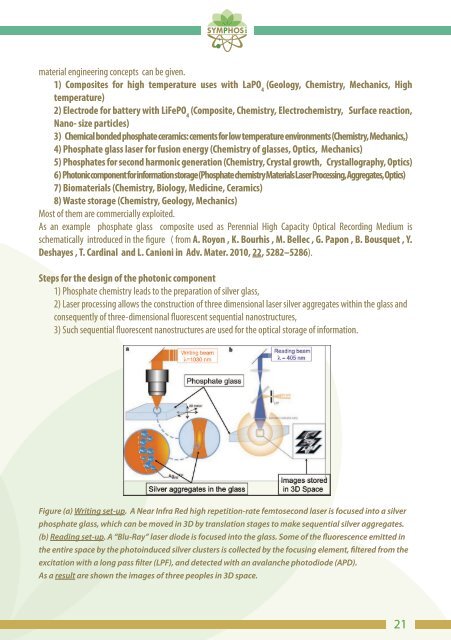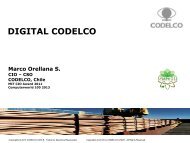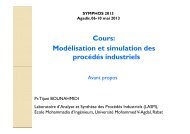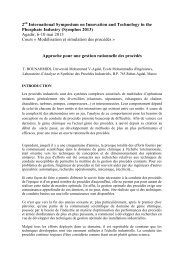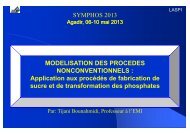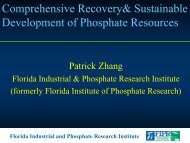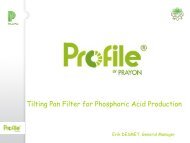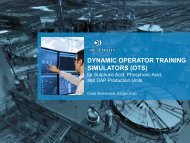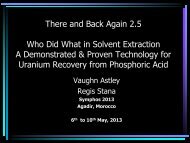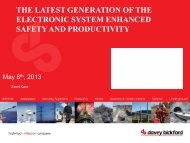Abstract SYMPHOS 2011
Abstract SYMPHOS 2011
Abstract SYMPHOS 2011
You also want an ePaper? Increase the reach of your titles
YUMPU automatically turns print PDFs into web optimized ePapers that Google loves.
material engineering concepts can be given.<br />
1) Composites for high temperature uses with LaPO 4 (Geology, Chemistry, Mechanics, High<br />
temperature)<br />
2) Electrode for battery with LiFePO 4 (Composite, Chemistry, Electrochemistry, Surface reaction,<br />
Nano- size particles)<br />
3) Chemical bonded phosphate ceramics: cements for low temperature environments (Chemistry, Mechanics,)<br />
4) Phosphate glass laser for fusion energy (Chemistry of glasses, Optics, Mechanics)<br />
5) Phosphates for second harmonic generation (Chemistry, Crystal growth, Crystallography, Optics)<br />
6) Photonic component for information storage (Phosphate chemistry Materials Laser Processing, Aggregates, Optics)<br />
7) Biomaterials (Chemistry, Biology, Medicine, Ceramics)<br />
8) Waste storage (Chemistry, Geology, Mechanics)<br />
Most of them are commercially exploited.<br />
As an example phosphate glass composite used as Perennial High Capacity Optical Recording Medium is<br />
schematically introduced in the figure ( from A. Royon , K. Bourhis , M. Bellec , G. Papon , B. Bousquet , Y.<br />
Deshayes , T. Cardinal and L. Canioni in Adv. Mater. 2010, 22, 5282–5286).<br />
Steps for the design of the photonic component<br />
1) Phosphate chemistry leads to the preparation of silver glass,<br />
2) Laser processing allows the construction of three dimensional laser silver aggregates within the glass and<br />
consequently of three-dimensional fluorescent sequential nanostructures,<br />
3) Such sequential fluorescent nanostructures are used for the optical storage of information.<br />
Figure (a) Writing set-up. A Near Infra Red high repetition-rate femtosecond laser is focused into a silver<br />
phosphate glass, which can be moved in 3D by translation stages to make sequential silver aggregates.<br />
(b) Reading set-up. A “Blu-Ray” laser diode is focused into the glass. Some of the fluorescence emitted in<br />
the entire space by the photoinduced silver clusters is collected by the focusing element, filtered from the<br />
excitation with a long pass filter (LPF), and detected with an avalanche photodiode (APD).<br />
As a result are shown the images of three peoples in 3D space.<br />
21


